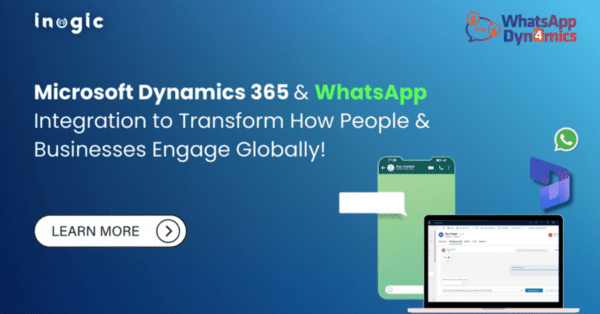Using automation for governance: how it can improve policy compliance
Why automate anything?
What is making managing Microsoft 365 (M365, for short) so complicated? And how can IT teams break out of the day-to-day management headaches to truly take control of their M365 instance?
Today, what is now called Microsoft 365 is an umbrella offering a breadth of products and services, with new apps being added all the time. Combined with skyrocketing usage, this complexity means many IT teams are struggling just to keep up – let alone to get ahead with proactive activities like security monitoring, governance, and attestation.
If you haven’t taken advantage of Microsoft 365’s automation options, it’s time to make some considerations. Automation can help streamline administrative tasks and get the most out of Microsoft 365 and it can give IT departments and security officers peace of mind by minimizing the risk of exposure to accidental misconfigurations or malicious behaviors while allowing other stakeholders to remain in control and empowered to proceed with fulfilling their work.
The great thing is that many of the latest automation tools are easy to implement. Unfortunately, that can sometimes lull organizations into falsely believing they will also be easy to govern. In fact, the opposite is often true. While automation can eliminate time-consuming and repetitive tasks, reduce costs, minimize errors and, possibly most importantly, help you stay in compliance with ever-evolving government regulations, such tools only work as well as they are governed. And while user data management and protection is increasingly becoming a concern for regulators, making staying in compliance essential, automation can often be the key to keeping up and avoiding penalties and fines—as long as automation governance is also kept up.
Automation in regulatory compliance
General Data Protection Regulation (GDPR) is a series of protective regulations for citizen data. Although most often associated with the European Union, GDPR’s reach and impact actually extends beyond Europe. And the U.S. is increasingly mirroring these standards.
Among the GDPR is the “right to be forgotten”. In other words, it’s the ability of a user to have their data and information removed from a system. Automation can help track all the places a user’s data might be within a series of systems while also helping with the user-management aspect of GDPR by setting up a process whereby a user requests their information be removed, and the system complies. Transparency is also a part of the process: automation can handle notifying the user that their data is removed and storing records of the process should a problem arise in the future.
Automation can also help organizations comply with so-called “right to disconnect” regulations, which originated in France but have since been taken up in other countries in various forms. In addition to France, workers in Germany, Italy, Slovakia, Luxembourg, the Philippines and Canada have the right to not engage in work activities after hours. Automation tools can help companies comply with these laws by automating related tasks, such as adding timed disclaimers to emails alerting recipients that the sender will not respond until business hours or automatically logging employees out of M365 sessions.
These are just some examples of how automation can be useful in regulatory compliance.
What to automate?
With new automation tools and cloud technology evolving faster than most people can keep up with, it’s normal to wonder whether a new automation process is even needed or if the advantages will make the implementation process worth it. But if you’ve been putting off automation implementation, it’s worth diving in—especially if what you want to automate is related to governance policies.
Automating governance means you can streamline the processes needed to remain in compliance with government regulations. As those rules change, so can your automation. Ultimately, automation can help ensure compliance and remove the potential for human error, particularly on data-driven and repetitive tasks.
Automation tools are also much easier than they used to be to use. Power Automate now has beta and first-preview Copilot integration, making it simple to build automation flows. Tools like pre-built connectors, templates and AI mean all you have to do is fill in a couple of boxes, and what’s essentially a robot gives you some workflow options to choose from.
CoreView, Automation Made Easy
Recently conducted CoreView study of over 1.6 million Microsoft users and looked at key four areas of potential issues: password policies, multi-factor authentication, email security, and failed logins and found that:
Almost 90% — were still struggling with readily identified issues across all four key areas
The remaining 10% of companies had issues across only two of the four key areas
Not a single organization had fully addressed these key aspects of security
At CoreView, we offer tools that automate monitoring and response capabilities beyond what’s offered natively within Microsoft 365. For example, we can give you the ability to automatically alert IT admins if a non-compliance occurs and then automate the related resolution process, honouring the re-certification and exception management in a very simple manner (e.g. movers/joiners/leavers-related processes that require multiple cross-department touch points and approvals, often tied to existing ITSM systems in place) or even go one step further and implement out-of-the-box configuration as a code to embrace a solid, governance framework blueprint for your Microsoft 365.
With CoreView you can elevate the mundane tasks that are bogging down your IT Team. And instead, IT Admins are now able to stay focused on mission critical infrastructure and services. Schedule your demo today.
Conclusion
Automation advancements, especially regarding AI, mean many of the tasks we’ve long believed were repetitive but inevitable part of the job are evolving into tasks we never even have to think about. We all get to play a part in this remarkable transformation in modern work. Indeed, the evolving integration and interoperability between the broader ecosystem and Microsoft 365 has the potential to drastically change our work lives in ways we probably don’t even realize yet.
While it can understandably be scary to implement those changes when nobody knows exactly what is coming next, that doesn’t mean automation should be avoided. In fact, it’s precisely the opposite: organizations must embrace these new automation tools to keep up with the competitive landscape. By starting with a plan that’s specifically created to address your organization’s needs, both now and in the future, you can make sure that the automation you implement does what it was designed to do: make work easier.










